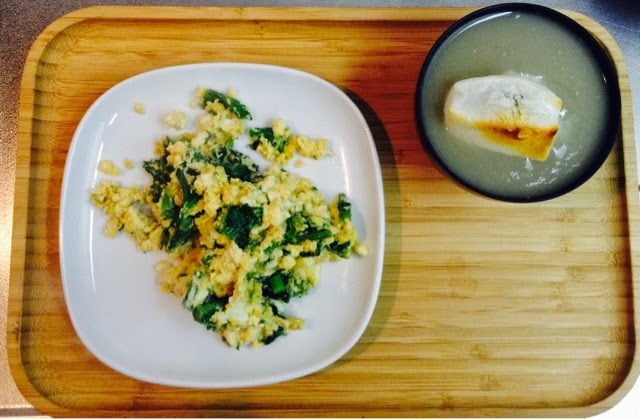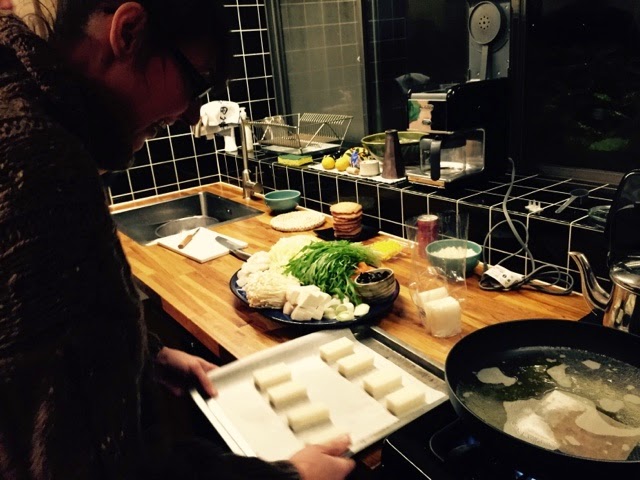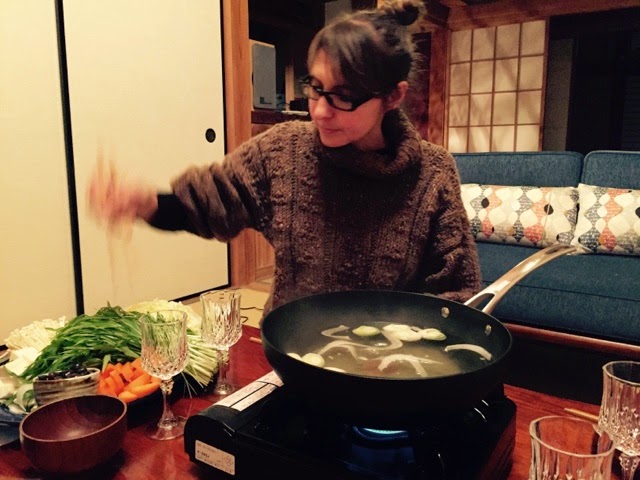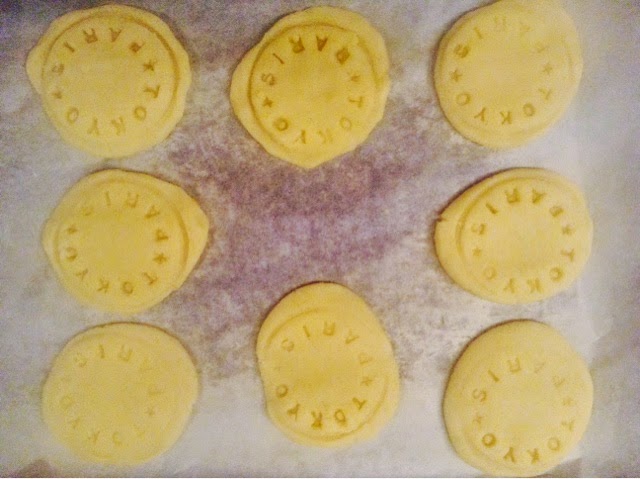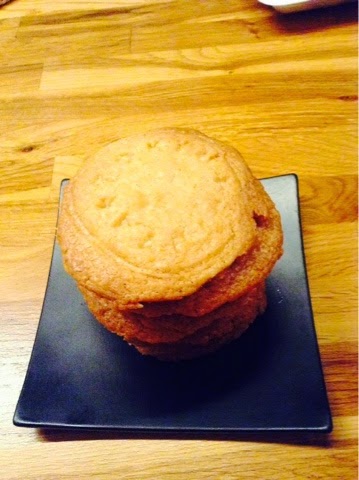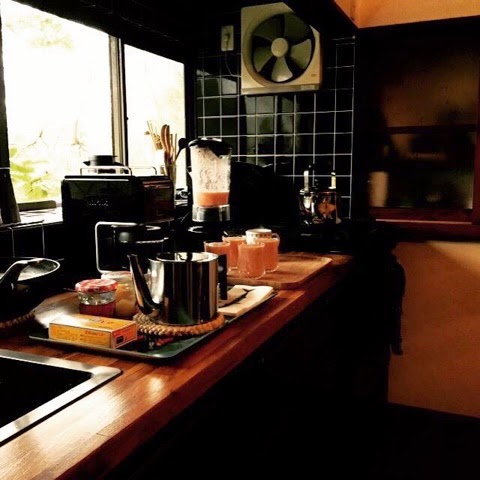I like to use leftovers to cook myself something for lunch. Yesterday evening I cook some veggies ragu (pink radish, sweet potato, leek, na no hana), and one big spoon was left over. So for lunch I added a carrot, linen seeds, pine nuts and an egg on the side, and I got a perfect lunch.
Kappabashi dori – 河童橋通り
If you like cooking and tableware, Kappabashi dori is a must go when visiting Tokyo. This street between Ueno and Asakusa is the home of many shops selling cooking gear and tableware for professionals. Most of the shops sell also to individuals (but it’s better to ask before being disappointed). There, you can find pretty much anything from metal sakura shapes to amazing laqueware bowls. Crazy knives and delicates bamboo baskets. With Prunellia we spent a few hours there the other day, and got plenty of new things to cook with!
Burdock soup, grilled mochi and na no hana scrambled eggs
Though it is slowly getting warmer it’s still not yet spring. A warm soup for dinner is still very much welcome!
Nabe four hands
Nabe is a traditional Japanese soup with vegetables (Chinese cabbage, carrots, mushrooms, leeks…), tofu (here we have yuzu tofu), shitaki (white Japanese konyaku pasta) and fish cut in small peaces (or meat, as you like).
Made together by Prunellia and Gentiane!
Stamped butter cookies
For my birthday, my best friend offered me a very nice present: a customizable cookie stamp. I’ve used it a few time already for tea and we ate the cookies right of the oven so didn’t had a chance to take a pic!!! This time I made some for dessert and I could keep them long enough to take a picture!! These are plain butter cookies, a bit like Britany’s specialty.
The recipe is really simple: 100g of butter, 150g of flour, 40g of sugar, baking powder, salt, vanilla. Of course you can make any variation of your choice!
Breakfast with twisted orange bread, whole grain bread and smoothie
With Prunellia and Aurore visiting us I’m preparing a few samples of what we like to eat. The rice bowl with salad-acocado-tuna topping (see Prunellia’s post), nabe, cookies, smoothie, breads…
Lunch at home
With Prunellia at home it means a lot of going out for dinner, little sleep, and busier than usual so for lunch I need my dose of cereals, fresh vegetables and home cooking. Today I prepare a mixture of cereals, with one egg and cheese that I bake in a frypan in circles, accompanied by grilled leek, shiitake and tomatoes, a little of olive oil and laurel. A power balanced lunch to get a lot of work done this afternoon!
Steamed whole cabbage
In winter, when it’s cold and dark I really love to eat cabbage based recipes. One of my favorite yet simplest is steamed cabbage. Basically I steam a whole cabbage so that the inside is still a little crunchy while the outside melts in the mouth. I usually accomodate it with only a fruity olive oil, thyme from Aix garden and salt. Today on the plate I’ve added a few slices of crunchy grilled bacon, but it’s optional.
Plum – 梅 – Prune
 |
| Plum tree blooming in our garden |
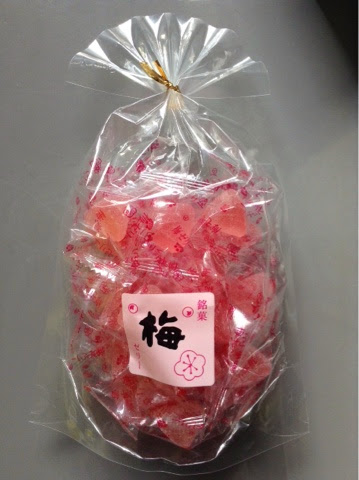 |
| Sweet plum and red shiso jelly |
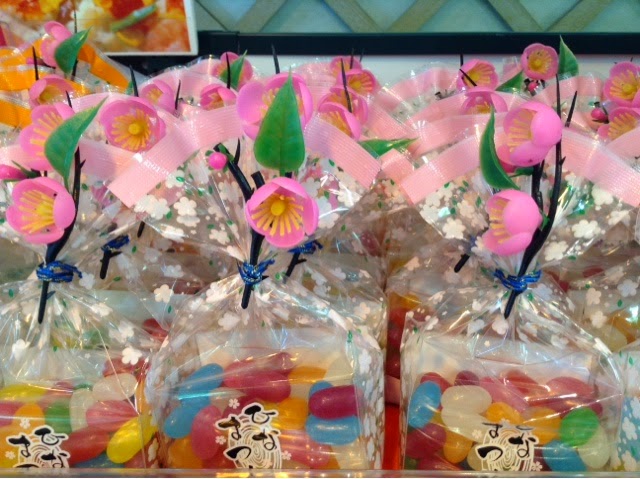 |
| Hina-matsuri sweets decorated with plum flowers |
Let’s talk umeboshi! The season for making some is far ahead, but since it is a preserve method they are eaten all year round, and known to be good against fatigue among other virtues. For many non Japanese people it’s an infamous sour thing that is often found in lunch boxes: small and hard, or in onigiri (rice balls 🍙): soft and juicy. I personally find it extremely delicious when home-made or of very good quality, but I wouldn’t recommend any of the cheap things from conbini. My favourite are the large and soft ones with a lot of juicy meat. It is often prepared with red shiso and is delicious eaten with plain white rice, with grilled chicken breast or with canned tuna (my lunch plate today).
Oh! And Prunellia arrives tonight in Tokyo!!!
 |
| My umeboshi favorite lunch plate |


